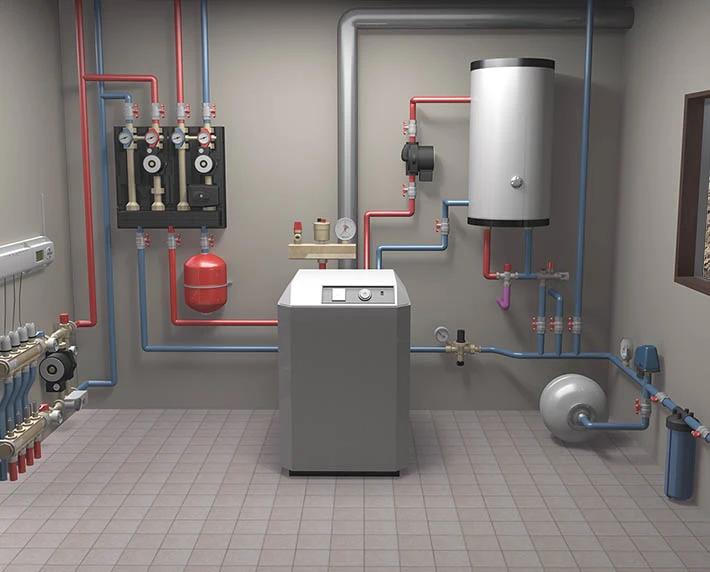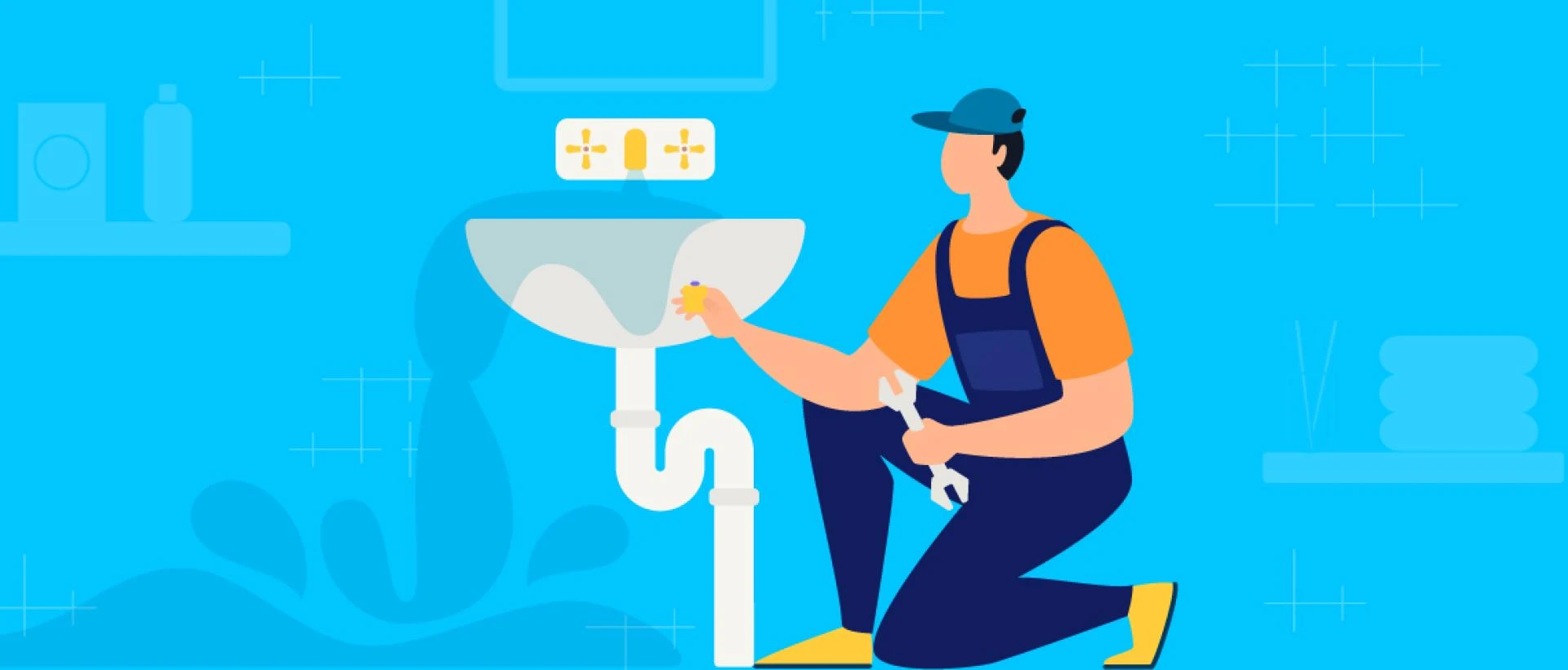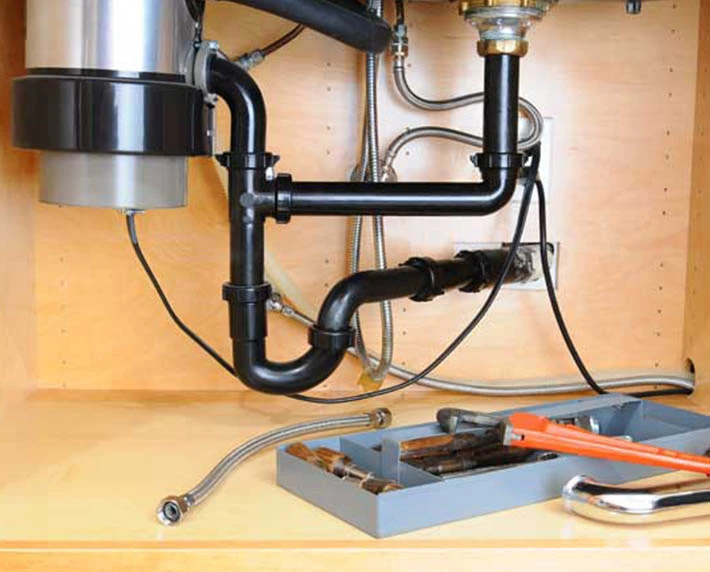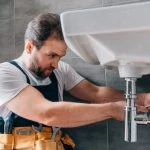Have you ever turned on a faucet and wondered what happens behind the scenes? Or found yourself dealing with a clogged drain and had no idea how to fix it? Plumbing can seem mysterious. But, understanding its parts can make these situations less stressful.
Most plumbing systems include two sets of pipes for cold and hot water.
Pipes and connections build the framework of any plumbing system. These tubes are often made from PVC, brass, or copper. They keep your water clean and flowing smoothly.
This article will explore different parts of a plumbing system. It will cover drains in your kitchen sink to sewer systems. They show you their roles and why they matter.
Ready to learn more? Keep reading.
Key Takeaways
- Pipes and fittings carry water throughout your home, made from materials like PVC or brass to prevent leaks.
- Water heatersprovide hot water for baths or washing dishes, with options for tankless models that save energy.
- Drainage systemsremove waste water from homes and protect against sewer gases by using pipes, drains, and vents.
- Water treatment systemsensure the water you use is clean by removing contaminants and softening hard water.
- Backflow preventers keep dirty water from mixing with your clean water supply, important for keeping drinking water safe.
Understanding the Components of a Plumbing System

Understanding a Plumbing System\'s Components is key. This is true for both homeowners and professionals. Pipes and fittings, drainage systems, water heaters, and water meters are key elements in a plumbing system.
Regular maintenance is essential to keep these components functioning smoothly.
Pipes and Fittings
Pipes and fittings act as the skeleton of a plumbing system, carrying water to faucets, toilets, washing machines, and kitchen sinks. These parts come in different materials. These include PVC (polyvinyl chloride), brass, and copper. For older systems, they are even made of lead.
They must fit together perfectly. This stops leaks and keeps hot and cold water flowing smoothly in homes.
Fittings include elbows. They change pipe direction. Tees split water flow into two directions. Couplings connect pipe sections. All fittings play crucial roles.
Pipes are made resistant to corrosion. This helps them last longer. It protects against wear from water pressure and chemicals in city water. This setup is key. It brings you clean tap water. And, it removes wastewater smoothly.
Drainage System
A drainage system removes waste water and prevents backflow. It does this through pipes, drains, and vents. These parts work together to keep homes safe from sewer gases. They also make sure that used water goes away quickly.
This system includes gutters on roofs and drainpipes underground. Gutters catch rainwater; drainpipes carry it away from the house. This setup stops water damage in basements. It keeps homes dry and safe from leaks or floods.
Water Heaters
Water heaters are key for a cozy bath or washing dishes. They come in two main types: tankless heaters and those with tanks. Tankless models heat water on demand, saving energy. Models with tanks store hot water until you need it.
Both use electricity, gas, or solar power.
Materials like stainless steel make these units resist rust and last longer. Smart technology allows some to adjust the temperature from your phone. It\'s all about getting that perfect shower or cleaning dishes effectively.
"A warm shower washes away more than just dirt; it can melt away stress."
Water Meter and Pressure Regulator
Moving from water heaters. It\'s key to consider the role of a water meter and pressure regulator in plumbing. The water meter measures the water used by a household or business. It helps manage usage and find leaks.
The pressure regulator is different. It keeps water pressure safe in the plumbing system. This prevents damage to pipes and appliances.
These components are crucial for maintaining an efficient and safe plumbing system. The pressure regulator prevents high pressures. These can lead to costly repairs or replacements.
The Role of Water Treatment Systems in Plumbing

Water treatment systems play a key role in plumbing. They ensure clean, safe water for drinking and use. These systems remove contaminants. These include sediment, chemicals, and impurities from the water supply.
Water softeners reduce mineral content. Filtration systems remove bacteria and harmful particles. Furthermore, chemical treatment methods like chlorination sanitize the water effectively.
By adding these systems to plumbing, people can trust their water quality.
- Water treatment - Essential for providing clean and safe water.
- Removes contaminants - Sediment, chemicals eliminated for a healthier supply.
- Softens water - Reducing mineral content using specialized systems.
- Filtration - Removes bacteria and impurities through effective processes.
- Chemical treatments - Chlorination effectively sanitizes the water supply.
Importance of Backflow Preventers in a Plumbing System
Backflow preventers are crucial in plumbing. They ensure that dirty water does not flow into the clean supply. They stop water flow from reversing. This stops pollutants, chemicals, or bacteria from entering the drinking water system.
This safeguard is vital. It maintains clean and safe drinking water for homes and communities. Backflow preventers play a big role. They keep the whole plumbing system safe by stopping health hazards from cross-contamination.
These devices are key for public health. Building codes mandate them to ensure water safety and purity. In times of pressure changes or emergencies, backflow preventers are indispensable. They ensure that only clean, drinkable water flows through plumbing systems.
Maintenance and Repair of Plumbing Systems
Maintaining and repairing plumbing systems is essential for their proper functioning. It ensures the delivery of clean water and the efficient disposal of waste. Here are some key points to consider:
- Regular Inspection: Conduct routine checks on all plumbing components such as pipes, fixtures, and water heaters to detect any leaks, cracks, or wear.
- Leak Detection: Utilize modern leak detection tools like electronic amplification equipment or infrared thermography to identify hidden leaks without causing damage to the property.
- Drain Maintenance: Keep drains clear from debris and buildup by using drain snakes or hydro-jetting equipment to prevent clogs and backups.
- Water Heater Service: Periodically service water heaters to remove sediment, check for corrosion, and ensure temperature and pressure relief valves are functioning properly.
- Emergency Planning: Establish an emergency plan outlining steps to take during plumbing crises such as shutting off main water valves and contacting professional plumbers.
Moving on to "Installations: Enhancing Your Plumbing System".
Installations: Enhancing Your Plumbing System

Enhancing a plumbing system involves:
- Installing water treatment systemsto ensure clean water.
- Adding backflow preventersfor contamination prevention.
- Utilizing resilient materials like CPVC and PEXfor durability.
- Incorporating tankless water heaters for energy efficiency.
- Employing ball valves and check valvesfor control and safety.
These installations optimize the plumbing system. They improve its performance, efficiency, and safety. They also ensure clean water supply and effective waste disposal.
Next: Emergency Plumbing - What to Do in a Crisis
Emergency Plumbing: What to Do in a Crisis
When facing a plumbing crisis, it\'s imperative to act swiftly and methodically. Here\'s a guide on how to handle emergency plumbing situations:
- Shut Off the Water Supply: Locate and turn off the main water valve to prevent further damage.
- Assess the Situation: Identify the source of the problem, whether it\'s a burst pipe, overflowing toilet, or leaking water heater.
- Clear the Area: Remove any belongings and furniture from the affected area to minimize potential water damage.
- Contain Small Leaks: Use materials such as towels or buckets to contain small leaks until professional help arrives.
- Reach Out for Assistance: Contact a licensed plumber or emergency plumbing service provider for immediate assistance.
- Document the Damage: Take photos of the affected areas and any visible damage for insurance purposes.
- Exercise Caution: Avoid attempting complex repairs if you are not trained; leave intricate fixes to skilled professionals.
Remember, your safety is paramount in an emergency plumbing situation.
Conclusion
In conclusion, understanding a plumbing system\'s parts is essential. They are key to its proper functioning. The pipes and fittings form the backbone. The drainage system, water heaters, meters, and pressure regulators are also crucial.
In addition, regular maintenance is important. Backflow preventers are also key to keeping the system running well. With this knowledge, people can make smart decisions about installations. They can also handle emergencies well.
FAQs
1. What makes up a plumbing system?
A plumbing system includes pipes, fixtures like sinks and showerheads, pumps for water distribution, and a septic system for waste. Materials range from copper tubing to PVC pipes, known for their corrosion resistance.
2. Why are different materials used in plumbing?
Materials vary because each has unique benefits. For example, galvanized steel and copper offer durability; meanwhile, PVC pipes and cross-linked polyethylene resist corrosion well.
3. How does water get into my house?
Water enters through the municipal water supply or a well. Pipes made of materials like chlorinated polyvinyl chloride (CPVC) carry it inside safely.
4. What prevents bad smells from entering my home?
Traps—a key part of your plumbing—block sewer gases from coming back up through drains. They\'re essential near fixtures like sinks and toilets.
5. Can I use any pipe material for repairs?
Not all pipe materials work together due to differences in corrosion resistance and temperature tolerance—like mixing copper with steel can cause issues without the right connectors.
6. How often should I check my plumbing system?
Regular maintenance is crucial to catch issues early—look out for leaks or signs of corrosion at least once a year... More if you have older steel pipes or live in an area with harsh water conditions.



